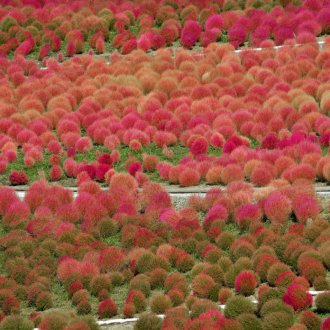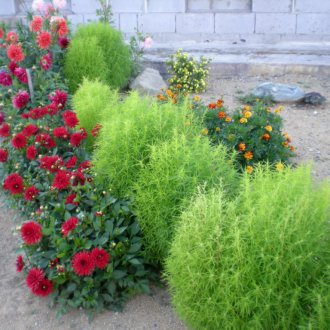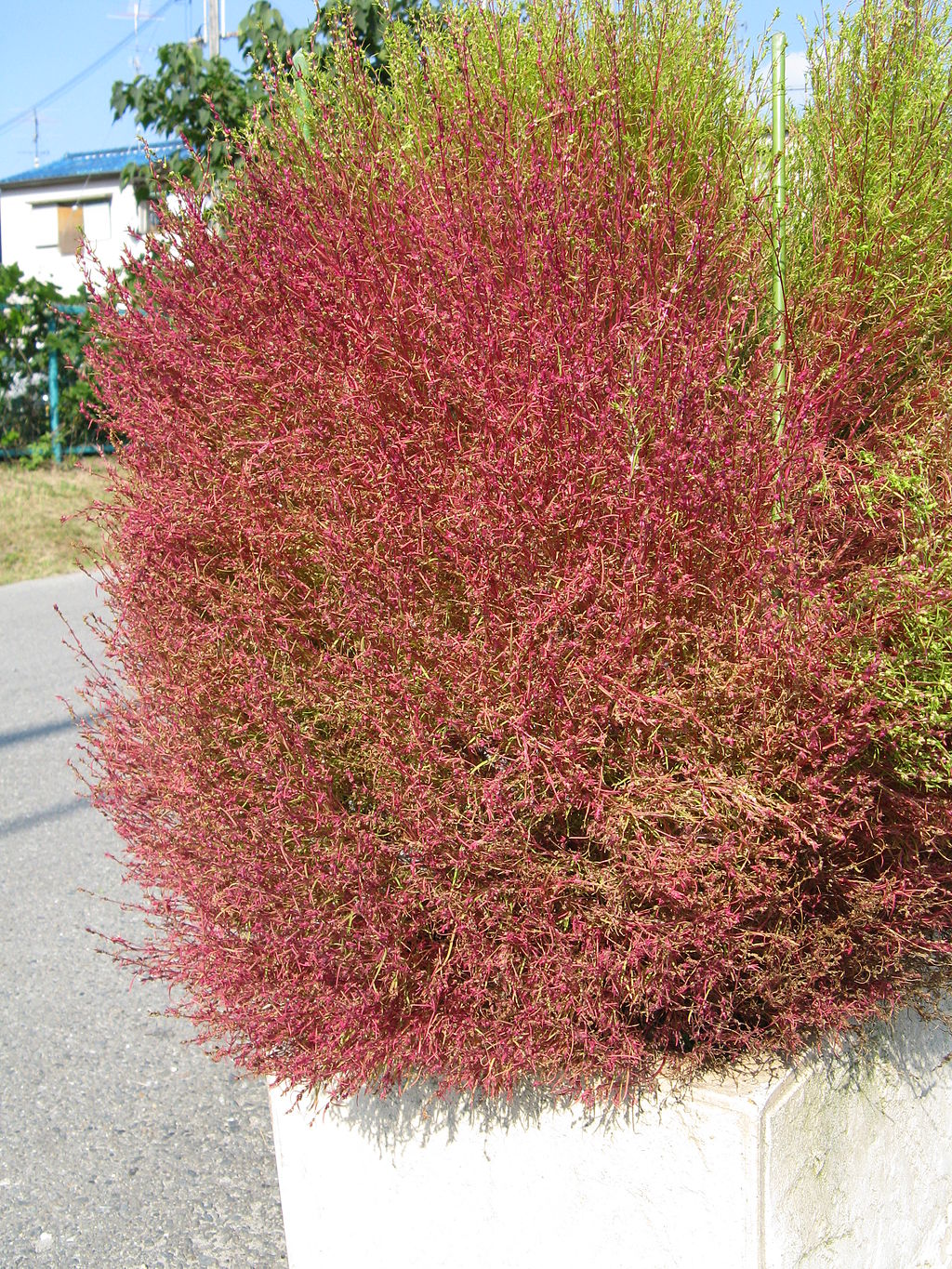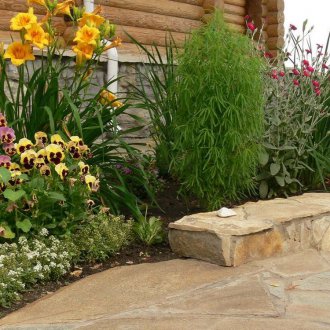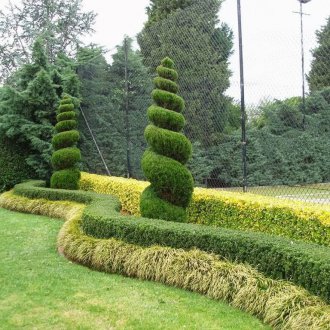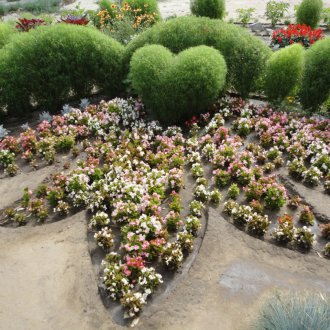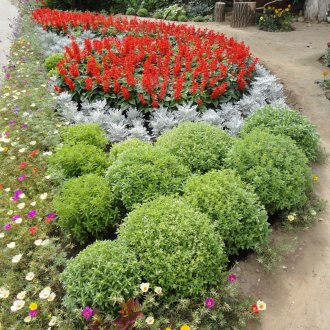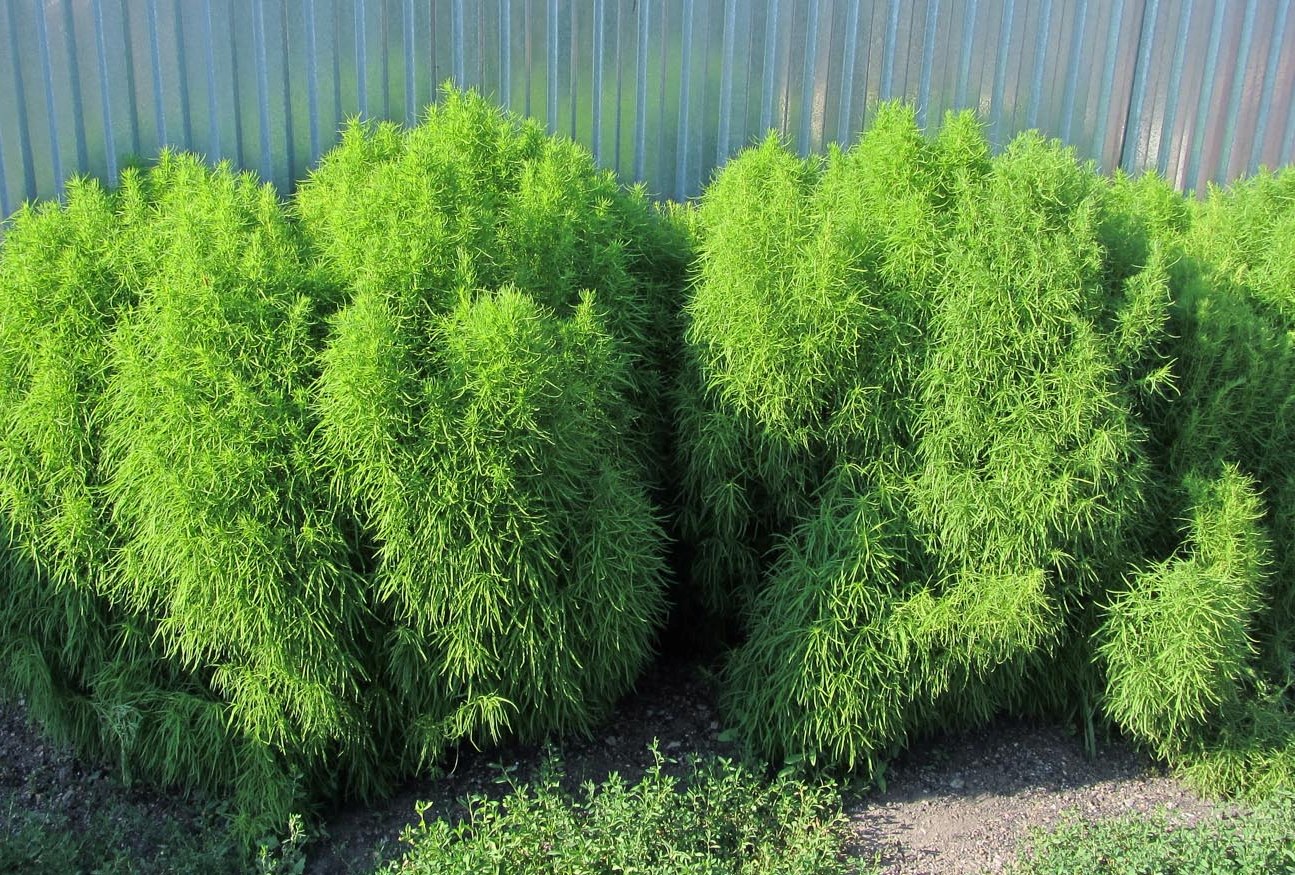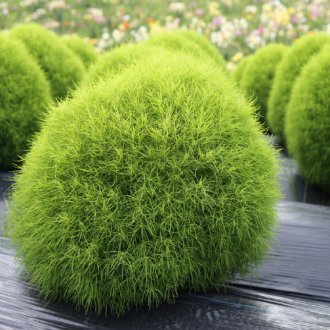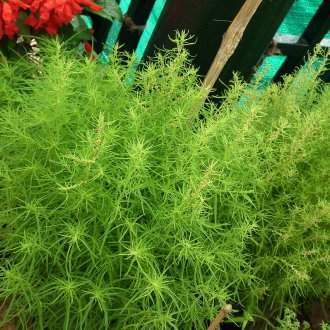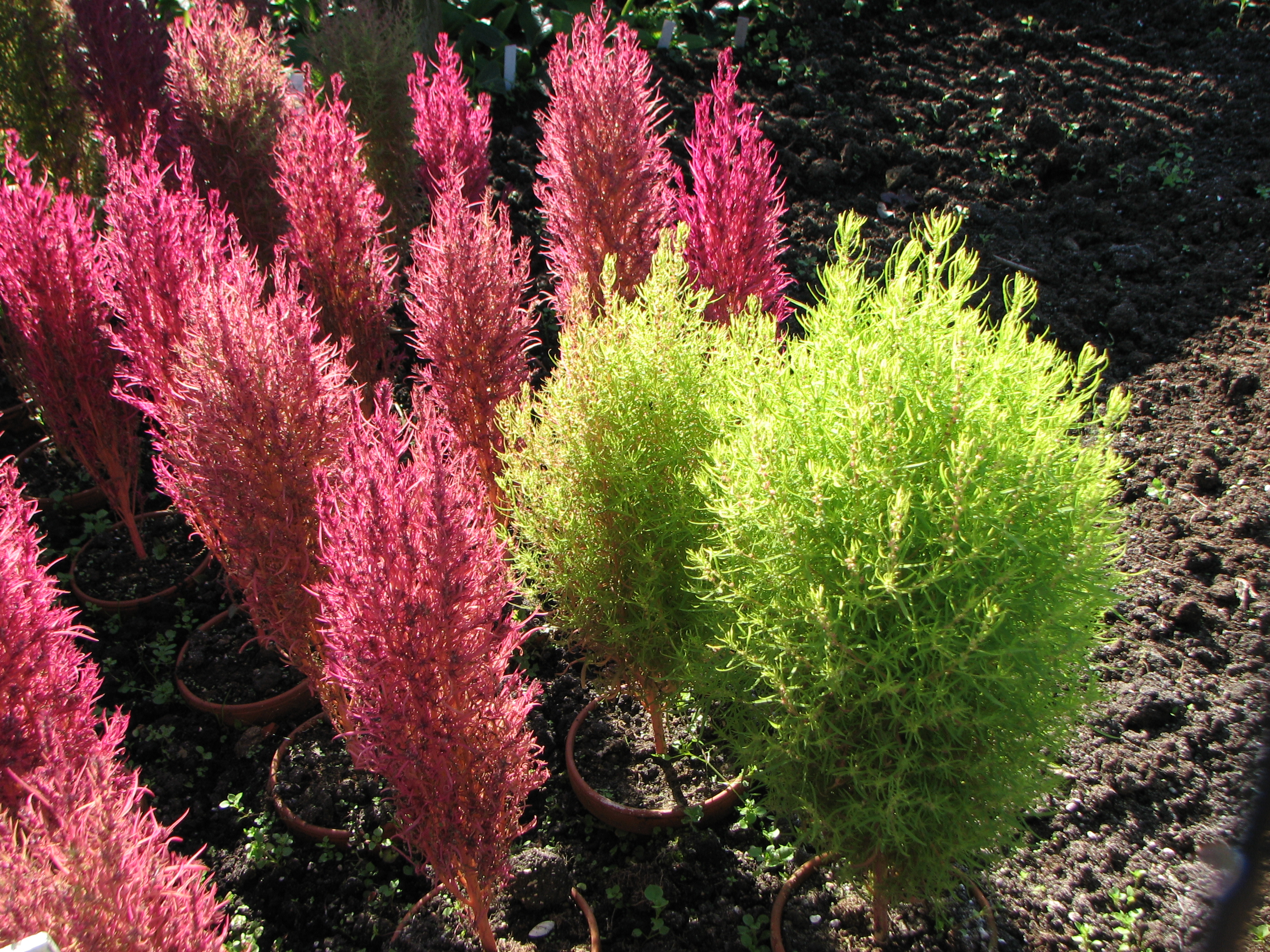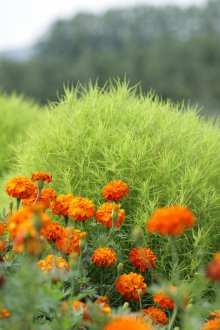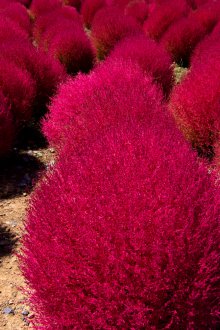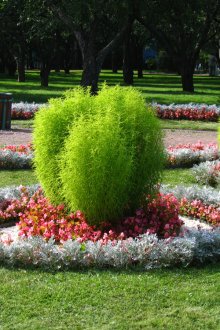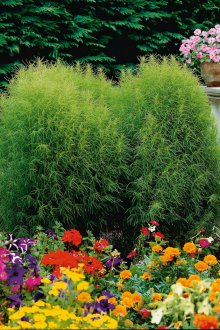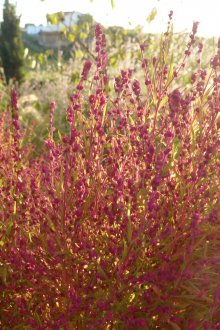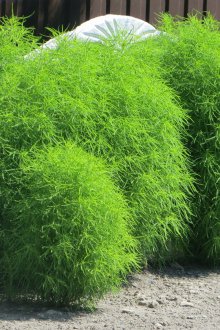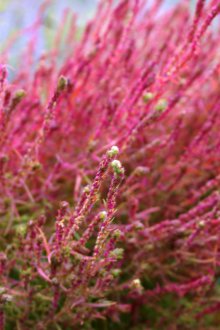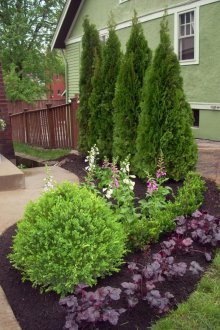Kokhiya: how to grow and care (21 photos)
Content
Today, Kohiya is actively used to decorate personal plots and park areas. This plant appeared in China and quickly became popular. Today it is cultivated in Europe, Asia, Japan, Australia and North America. The worldwide popularity of summer cypress is explained by its unpretentiousness to climatic conditions and interesting appearance.
What does the plant look like?
Many of us are familiar with kohiya - a bush with a lush crown. The plant forms and acquires its appearance in early June and does not lose it until the first frost. During the summer, the color of kohih changes. First, the plant is dark green or light green, and in the fall it strikes with a bright palette of colors. She may be:
- yellow;
- orange
- red;
- dark raspberry.
It is not for nothing that kohiya is called summer cypress. It has very soft, thin, leafless, silky leaves that feel like cypress needles. Kokhiya is firmly fixed in the ground - its root has a length of about three meters. Thanks to the developed root system, the plant easily tolerates dry times and takes root even in Africa.
In July, the bush begins to bloom, but the cochia flower has a nondescript appearance. Such flowers are difficult to see, because they hide under the foliage on the tops of the branches. After pollination is completed, small nuts with seeds ripen in the place of flowers, which, falling into the ground, give a new crop next year.
Views of kohii
Today in nature there are more than 80 species and varieties of this plant. In decorative gardening, the following types of cohia are actively used:
- perennial kohiya;
- cochia broom;
- cochia densely flowered;
- cochia hairy;
- nephritis;
- cochia woolly-flowered.
Venichnaya is actively used in landscape design and is suitable for cultivation in central Russia. It has the shape of a voluminous ball, which in the fall acquires a noble dark red hue. This type of kohii easily tolerates small frosts and pleases the owners of suburban areas until the first severe frosts and snow.
Perennial cochia is a branching, but small shrub - a height of not more than 50 cm.All varieties of this variety can cover a large area of the earth - the length of the stems of the creeping perennial cochia reaches 70 cm.If the plant is properly looked after, it will cover the ground with a green silky soft carpet.
Cochia hairy is also used extensively in landscape design. The shrub grows in the form of a volumetric ball, which in diameter reaches 70 cm, and in height - about a meter. In early summer, plants have a light green hue, and in the fall they become burgundy.
Kokhii woolly and densely flowered do not have such a voluminous shape as other varieties. They are also used for landscape design, but not as actively as the more magnificent varieties. Plants of the jade and sultan variety are ideal for sculpting haircuts. The height of these shrubs reaches one meter, and the width is 50 cm or more.
Kohii cultivation
Cochia can be purchased already in the form of a bush, but can be grown at home from seeds: they are simply put in open ground. However, in order for the plant to take root, there must be good weather conditions, and they cannot provide their people. If you want the seeds to give inputs faster, they additionally need to be treated with a growth stimulator.
The most common option is to grow cochia seedlings from seeds, which are then planted in open ground. First you need not to save and buy high-quality seeds.
Then in special peat or plastic boxes for seedlings, you need to prepare the soil. They need to mix peat, organic fertilizers, sand with land from the summer cottage. Kokhiya is unpretentious and any soils that are sold in garden shops are suitable for it. The main thing is that the soil is neutral in composition.
If you decide to grow cochia at home, make small grooves in the ground, put the seeds in the ground, pour them from the spray bottle and tighten with cellophane. The soil should not be compacted - it should be loose and let water through.
Boxes with seedlings should be placed in a room with an air temperature of not more than 20 degrees. They should not be placed next to batteries, heaters, or on the windowsill, on which the sun shines all day. Planting and care in the future do not require special skills. After planting, you need to water the soil from the spray gun every day in the mornings or evenings, and then the first seedlings can be observed in at least a week later.
When the seedlings appear, they remove the cellophane, and after a while the seedlings need to be planted in separate pots - so they will grow faster. These plants love light, but can not stand the heat, so the containers in seedlings need to be placed in bright rooms, and if necessary, install additional fluorescent lamps. So that the sprouts do not weaken, the light should get on them for at least 12 hours - then the processes of photosynthesis will take place without slowing down.
Seedlings need competent care. If watering is plentiful, then the stalks of the sprouts may turn black. If blackness begins to appear on the plants, diseased seedlings are removed, and sawdust or charcoal, as well as calcined sand, are placed on the soil in the pots. For prevention, immediately after planting in water for irrigation, you can add manganese or fertilizers that prevent the formation of fungus. It is not necessary to water with such a solution itself seedlings, but the soil along the edge of the pot. Otherwise, potassium permanganate or chemicals can burn still weak plants.
It is advisable to sow a maximum of two to three pieces at once in a peat pot. Some time after planting, weak sprouts are pulled out, and peat pots along with plants are planted in open ground - so cochia of any species will take root more quickly. Then, decomposing in open ground, peat provides additional nutrition to the root system of the plant.
We plant seedlings in the ground
If you yourself, without the help of a landscape designer, ennoble your garden, carefully choose the place where the summer cypress will grow. This plant does not like excess moisture and shadow, therefore, for planting shrubs, select the most open areas on the estate.
It is also worth abandoning the idea of planting kohiya in a lowland or in the ground, under which groundwater lies closely. If you want the bushes to be tall, pick up open, sunlit places on your site.
Not everyone knows when to plant kohiya in open ground. The main thing here is not to rush, but to wait for the last spring frosts and let real spring weather get better, but you should not delay it.
Cochia home seedlings are planted when all the seedlings of fruit and berry trees are planted in late March and early April. The height of the seedlings at the time of planting should be at least 15 cm, then it takes root well and does not die. Shrubs, especially perennials, need to be planted at a distance of at least 40 cm. There should be enough free space around each seedling so that it has room to grow and spread.
How to care for kohiya
The main advantage of this shrub is its unpretentiousness.Even if your site is interrupted by water supply, do not worry, because cohia easily tolerates drought, but still the plant requires systemic care.
A shrub will delight you if it:
- to water;
- to feed;
- weed;
- crop
- loosen the soil.
Kokhiya does not like excess moisture, so it is watered in dry weather only if the leaves begin to fade. Shrubs are watered from a watering can, and not from a hose - this is important. In summer, the sun and wind dry the soil, and a crust forms on it, which prevents the circulation of moisture and air. This can be avoided if the soil is regularly loosened.
In the infield, it is imperative to declare battle for the weeds. The grass clogs the root system of shrubs, and does not allow them to grow, so weeding should be done several times a season. If the weather is rainy and weed grows fast, weeds will have to be disposed of at least once a week. It is better not to wait until the earth dries and hardens, and weed and loosen one day after the rain.
Kokhiya will grow quickly and will surely delight you with a bright foliage color in late autumn if you regularly feed it. The first fertilizing with fertilizers is carried out already 14 days after planting, and then twice a month. If you do not want to poison the soil in your area with chemistry, use organics. For feeding suitable ash, humus, manure. Kokhiya holds the form perfectly, but for it to grow in the shape of a ball or cone, it needs to be trimmed regularly - at least 1 time per month.
Unlike other plants, kohiya is not afraid of garden pests. At high humidity, rot may appear on it. To avoid the destruction of all shrubs, diseased plants are uprooted, and healthy ones are treated with a weak solution of manganese. To combat spider mites and aphids, chemical solutions are used.
Kohiya in your garden
These shrubs will look organically in the city park and in the courtyard of the country house. You can give them the shape of a ball, pyramid, rectangle, and more complex shapes - nesting dolls, columns, vases, or you can create original compositions by combining several types of this shrub.
With the help of kohiya you can not only decorate the garden, but also zoning the space. For example, to designate paths, a pool, an arbor, having planted bushes along them. They perform the function of hedges and immediately divide the space into several zones. And even if you have very little space in front of the house, be sure to find a piece of land for the kohii. In summer, this shrub will delight you with emerald color, and in autumn - red or orange.
Kokhiya will become a universal solution for decorating any personal plot. Such plants are in great demand, because they do not need special care and constant watering. With a minimum of effort, you can independently grow such a beautiful shrub that will delight you with bright colors from the very beginning of summer to the first frost.
